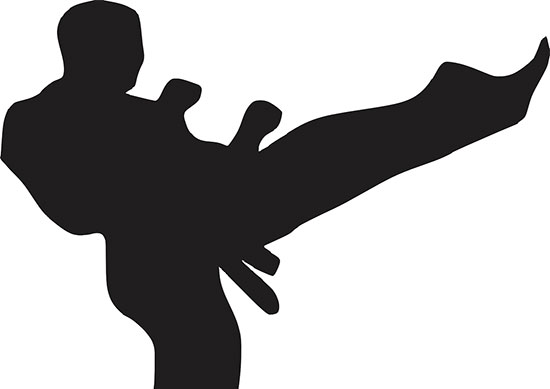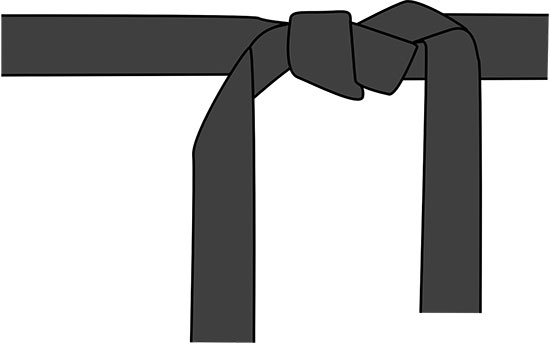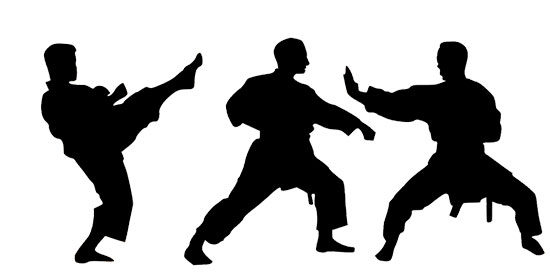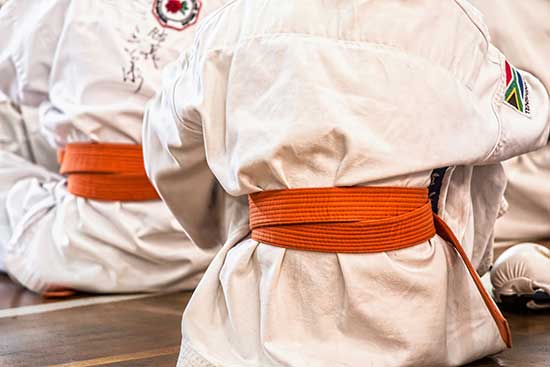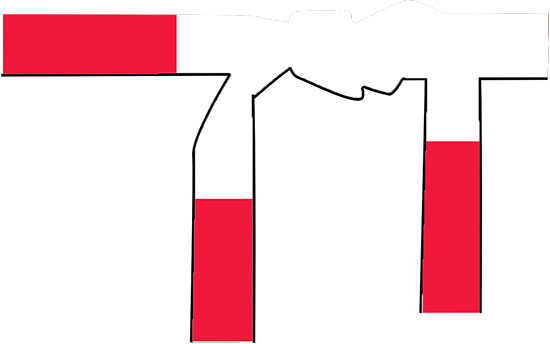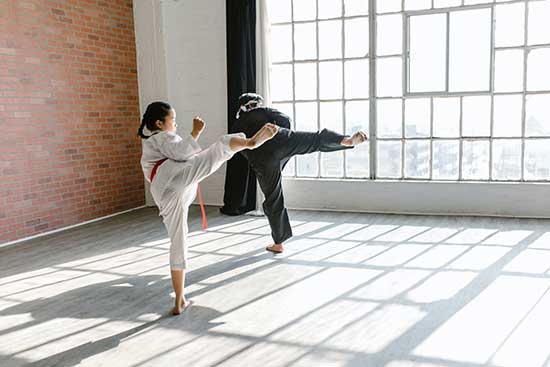Karate is a combat system whose successful implementation is associated with the establishment of a link between the fighter’s (karateka) physical and mental states.
Generally, this link is often externally symbolized by a shout referred to as ‘Kiai’, which is produced during offensive or defensive moves.
Kiai is a compound word that is made up of Ki (energy) and Ai (join). As such, based on this meaning, it is clear that yelling in Karate serves the essential purpose of uniting a karateka’s energy.
Besides creating this unison, Kiai also facilitates the expression of an individual’s fighting spirit, thus in turn enhancing the production of a focus for one’s energy and motivation for technique performance.
As a result, this leads to the infusion of higher levels of power and drive within targeted strikes and maneuvers.
Kiai also serves the purpose of opponent intimidation, as well as providing markers for strikes in Karate competitions.
The widespread utilization of Kiai in Karate clearly showcases its overall importance in the discipline. The establishment of a deep level of understanding of the benefits of yelling would aid in the creation of a newfound appreciation for its role in Karate.
Contents
Are there specific words that karate fighters shout?
The manifestation of Kiai is linked to a number of vocal expressions. On a basic level, Kiai refers to the resulting production of noise by karatekas due to air exhalation during technique performance.
With regard to its physical aspects, Kiai is employed for the training of breathing techniques that are proper for attack execution.
This training is reliant on techniques of mental imagery, which teach karatekas how to use the diaphragm (hara) as a source of their shouts or yells.
In turn, this implies that actual vocalization is secondary to the concentration of emotional, mental, and physical power.
Although Kiai is not defined by the production of specific vowels and sounds, Ahh-Ayy is the most common vocalization.
Hyah, Eee-yah, Aiyah, and Hi-yah are additional common sounds that are produced by karatekas during the performance of techniques.
What benefits does yelling have for a karate fighter?
One of the most important benefits of Kiai is strike enhancement. This is related to the incorporation of exhalation during the execution of lifting, pulling, and pushing motions for the achievement of success through higher levels of aggression and power.
Kiai integrates this concept into the performance of karate techniques, thus resulting in strikes that have more drive and power.
The benefits of Kiai also encompass the effectiveness of the defense. In this case, yelling and exhaling produces a subconscious flexing of abdominal muscles, which in turn aids in the prevention of excessive trauma, and allows for the absorption of opponent strikes.
As such, this leads to the creation of defensive techniques that have a high level of efficaciousness.
Additionally, shouting plays a major role in the creation of a specific pattern of breathing, which contributes towards the development of an effective performance pace.
Essentially, effective pacing significantly contributes towards the easy and efficient incorporation of new factors into already mastered techniques, for better offense and defense.
Ultimately, a breathing pattern that is familiar creates a strong foundation for the creation of a functional fighting strategy.
The display of authority is a major aspect of offense in Karate. In light of the link between Kiai and the mental fortitude that is required for the execution of elite techniques, yelling creates an overbearing aura over one’s opponent.
Consequently, the reduction of an opponent’s confidence improves a karateka’s chances of success.
In addition to displaying authority, yelling is also linked to the essential advantage of disrupting the focus of an opponent.
While Kiai results in the opponent’s loss of focus due to the confusion that results from an aggressive outburst or shout, it contrastingly improves the karateka’s focus and overall chances of success by disrupting an opponent’s execution of techniques.
Take away
Kiai is an important avenue for the establishment and maintenance of focus at an emotional, physical, and mental level.
In turn, this focus results in a number of benefits that share the common outcome of improving the level of skill and ensuring efficient technique execution.
With reference to its widespread usage, as well as its overall advantageousness in performance, it is evident that Kiai is significantly important in Karate.
As such, the complete mastery of this technique is paramount to the achievement of outstanding levels of performance.
